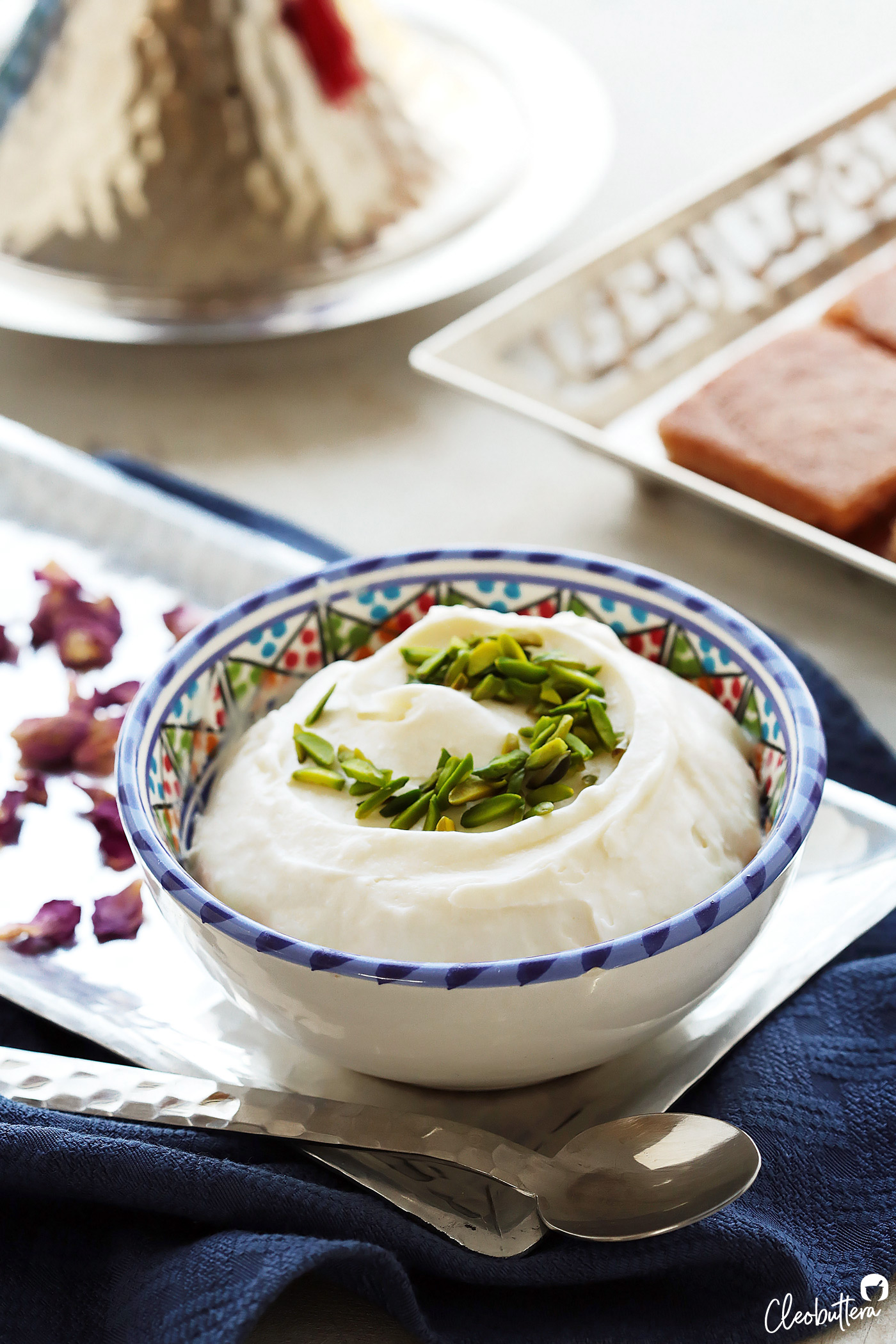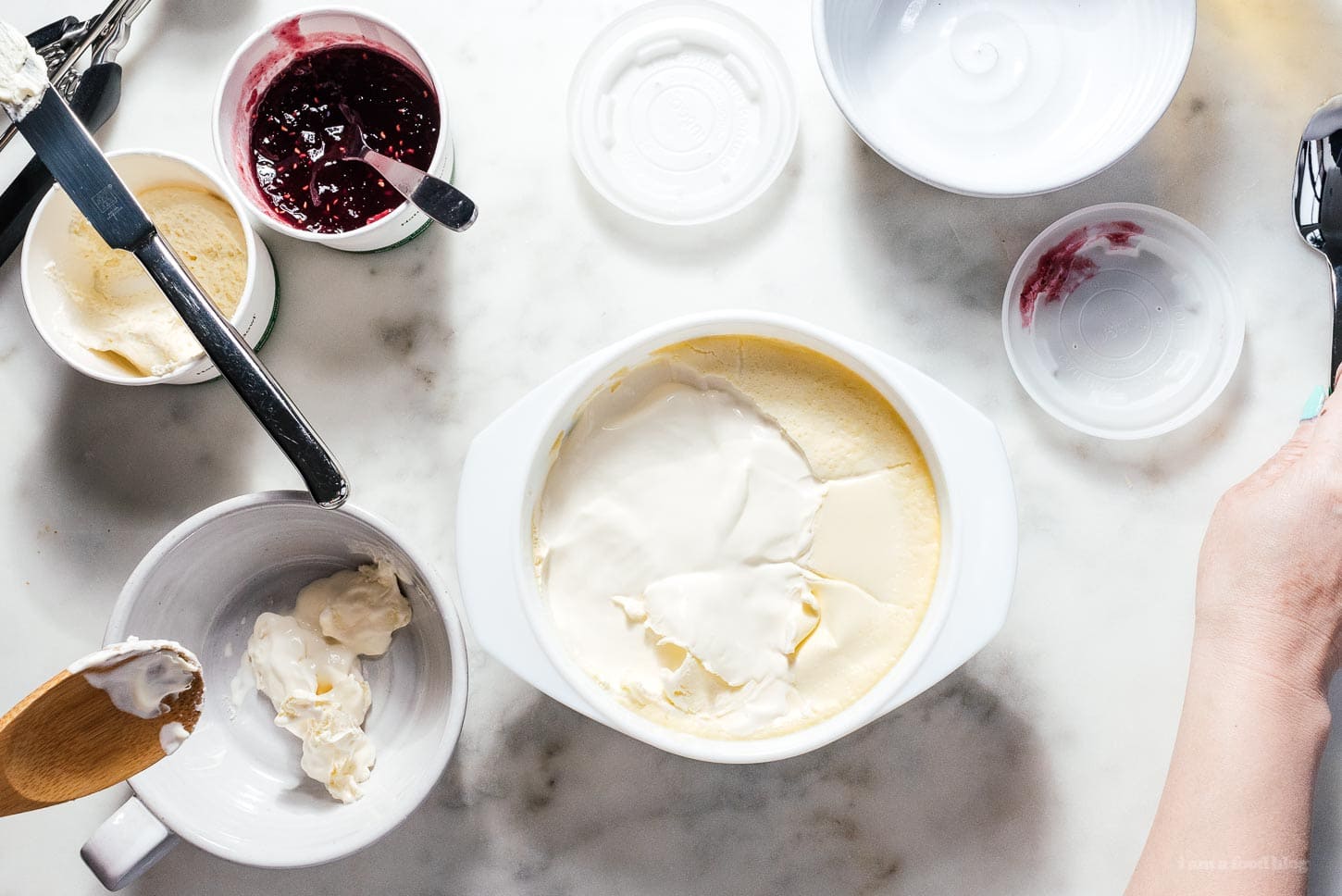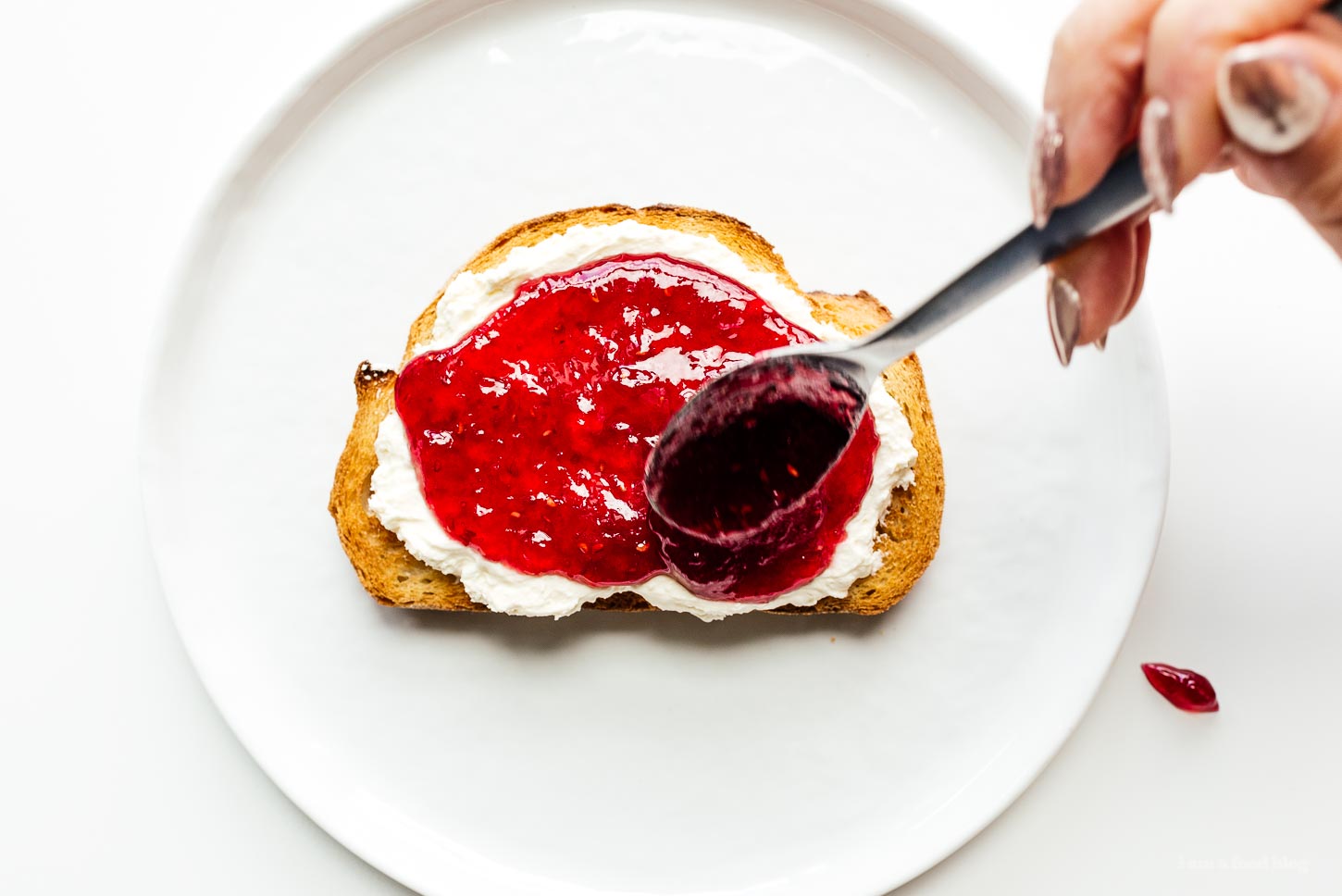

# The Wonderful Realm of Clotted Cream
If you haven’t tried clotted cream yet, you’re missing out on a culinary gem that is essential to British fare. This thick, creamy indulgence is often likened to a blend of whipped cream and whipped butter, yet it boasts a deeper, more intricate taste. It serves as a luxurious topping for scones, making it a vital part of the classic afternoon tea ritual.
## What is Clotted Cream?
Clotted cream, sometimes referred to as Devonshire cream or Cornish cream, is a rich, spreadable type of heavy cream that hails from the West Country of England. The term “clotted” comes from the method of gently heating the cream, allowing the fat to rise and form clots. This process was pioneered by dairy farmers in Devon as a means to extend the shelf life of milk, and it has grown into a cherished delicacy.
## Clotted Cream Ingredients
The process of making clotted cream is surprisingly easy, needing only one essential ingredient:
– **Cream**: You’ll require heavy whipping cream with a milk fat content of 35% or more. It’s crucial to steer clear of ultra-pasteurized cream, as it will not produce the desired outcome.
## How to Make Clotted Cream
Crafting clotted cream at home is a simple endeavor that demands little effort:
1. **Bake**: Pour your heavy cream into an oven-safe dish and bake it in a low-temperature oven (around 170°F) for about 10 to 12 hours, or overnight.
2. **Cool**: After baking, allow the cream to cool to room temperature before refrigerating it for a minimum of 8 hours to firm up.
3. **Skim**: The thickened, light golden layer that forms on top is your clotted cream! Gently skim it off and savor.

## What Does It Taste Like?
Clotted cream features a decadent, creamy taste that isn’t overly sweet. Its smooth texture melts effortlessly in your mouth, making it a superb match for sweet jams. The subtle sweetness is akin to that of premium butter, which adds to its allure.
## What Do You Eat It With?
Clotted cream is most famously enjoyed with freshly baked scones, where it is often lavishly spread on top along with jam. Its versatility means it can be paired with a wide array of baked goods. Here are several popular combinations:
– **Scones**: The quintessential pairing, especially with strawberry jam.
– **Toast**: A delightful substitute for butter.
– **Banana Bread**: Introduces a creamy richness to this sweet loaf.
– **Cakes**: Ideal for spreading on cake slices for an indulgent treat.

## What Kind of Cream?
To prepare clotted cream, you should use heavy or whipping cream. This high-fat cream is skimmed from milk before it is homogenized, and it’s vital to select the best quality available—preferably local, organic, and grass-fed. The flavor of your clotted cream will mirror the quality of the cream you choose.
### What is Heavy Cream?
Heavy cream, also known as heavy whipping cream, is cream that has a fat content of 35% or more. It is the thick, creamy substance that rises to the surface of milk.
### What is Ultra-Pasteurized Heavy Cream?
Ultra-pasteurized cream is heated to a high temperature (280°F) to prolong its shelf life. Unfortunately, this type of cream is not fit for making clotted cream, as it won’t thicken correctly.
## Alternative Methods for Making Clotted Cream
### Instant Pot
You can also produce clotted cream in an Instant Pot. Just pour the heavy cream into the pot, utilize the yogurt function until it reaches boiling, then switch to keep warm for 8-10 hours. After it cools, refrigerate for no less than 12 hours before skimming.
### Slow Cooker
Using a slow cooker is another viable method. Pour in the cream and set it to warm (keeping the temperature between 165-180°F) for 8-10 hours. Once finished, cool and refrigerate prior to skimming.
### Rice Cooker
If your rice cooker has a keep warm setting that maintains a temperature between 165-180°F, you can also use it to create clotted cream. Follow the same steps as with the slow cooker.
## Why Is There a Crust on My Clotted Cream?
The crust that appears on top is a sought-after aspect of clotted cream. It consists of the thickened cream that has clotted during the cooking phase. Beneath this layer, there is often a creamier section that can also be enjoyed. The liquid